Abstract
Results of a U.S.S.R.--U.S. cooperative laboratory effort to improve and validate experimental techniques used to assess subtle reproductive effects in male laboratory animals are reported. The present studies attempted to evaluate the reproductive toxicity of cadmium as cadmium chloride and boron as borax (Na2B4O7) and to investigate the mechanism of toxicity in the rat following acute and subchronic oral exposure. In vitro cell separation techniques, in vivo serial mating tests, and plasma assays for hormones were utilized. Effects on the seminal vesicle and prostate were evaluated with chemical and enzyme assays. Clinical chemistry was monitored routinely. Acute oral doses, expressed as boron were 45, 150, and 450 mg/kg while doses for cadmium equivalent were 6.25, 12.5, and 25 mg/kg. Rats were also allowed free access to drinking water containing either boron (0.3, 1.0, and 6.0 mg/l.) or cadmium (0.001, and 0.l mg/l.) for 90 days. Randomly selected animals were studied following 30, 60, and 90 days of treatment. These initial studies, utilizing a variety of methods to assess the reproductive toxicity of environmental substances in male animals, suggest that cadmium and boron at the concentrations and dose regimens tested are without significant reproductive toxicity.
Full text
PDF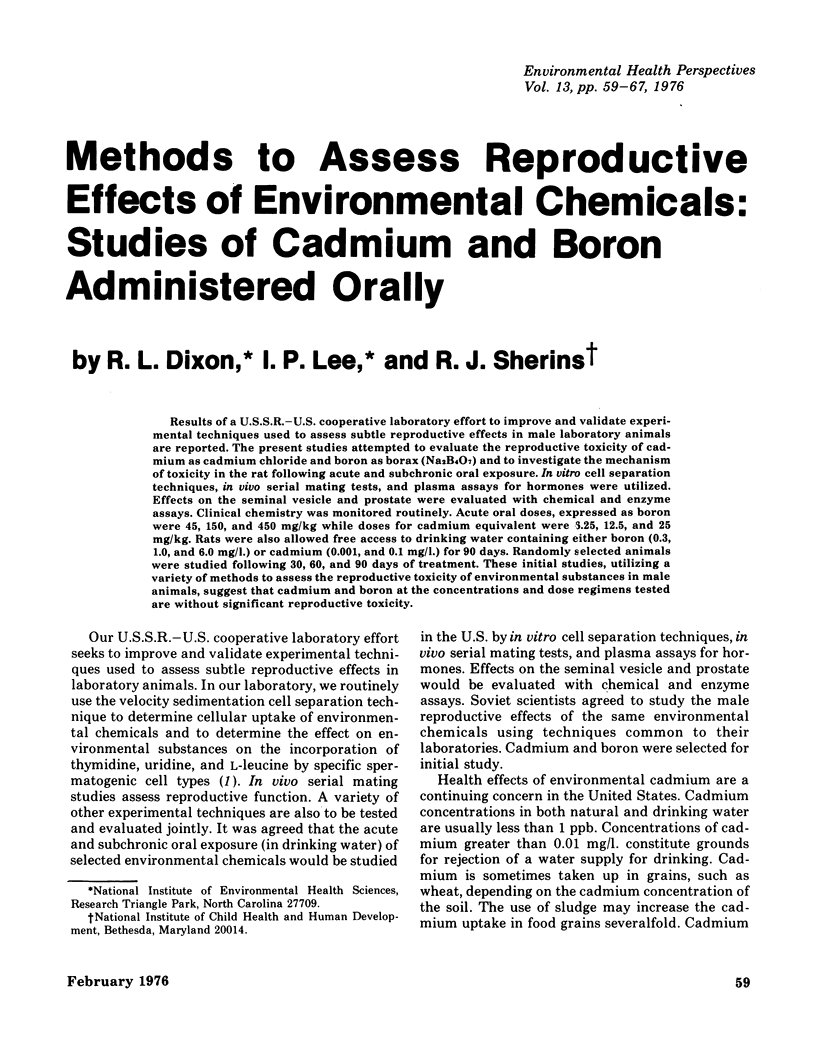
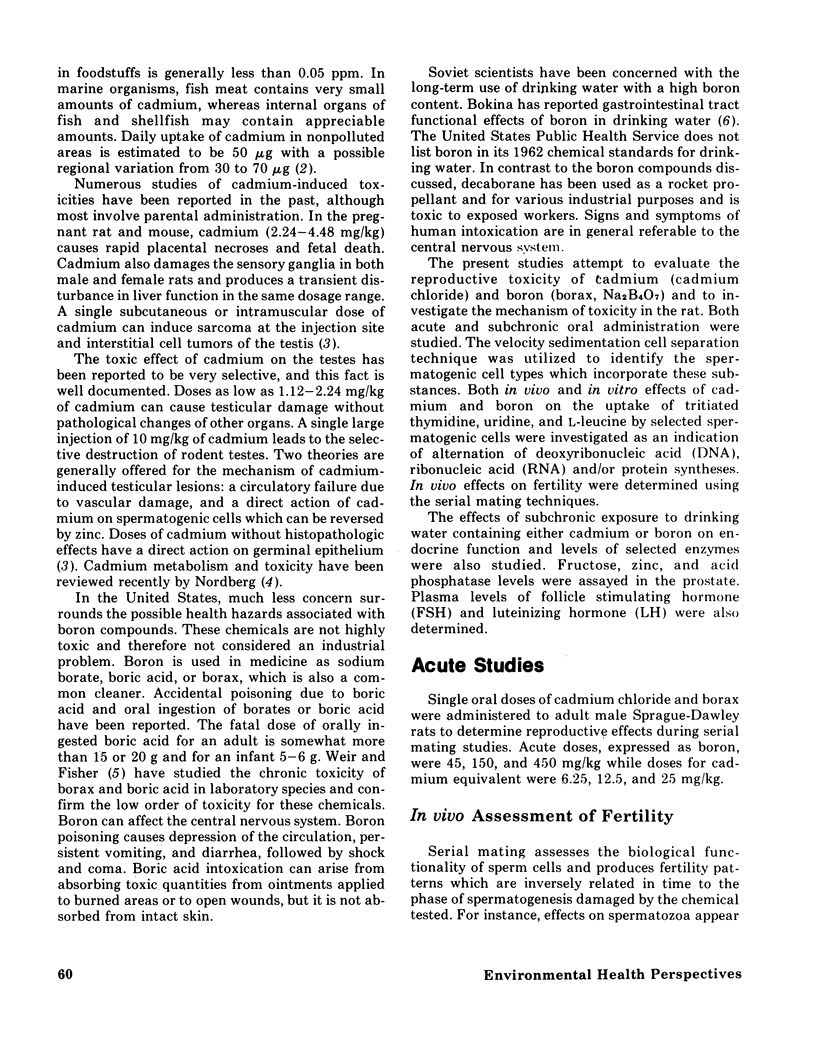

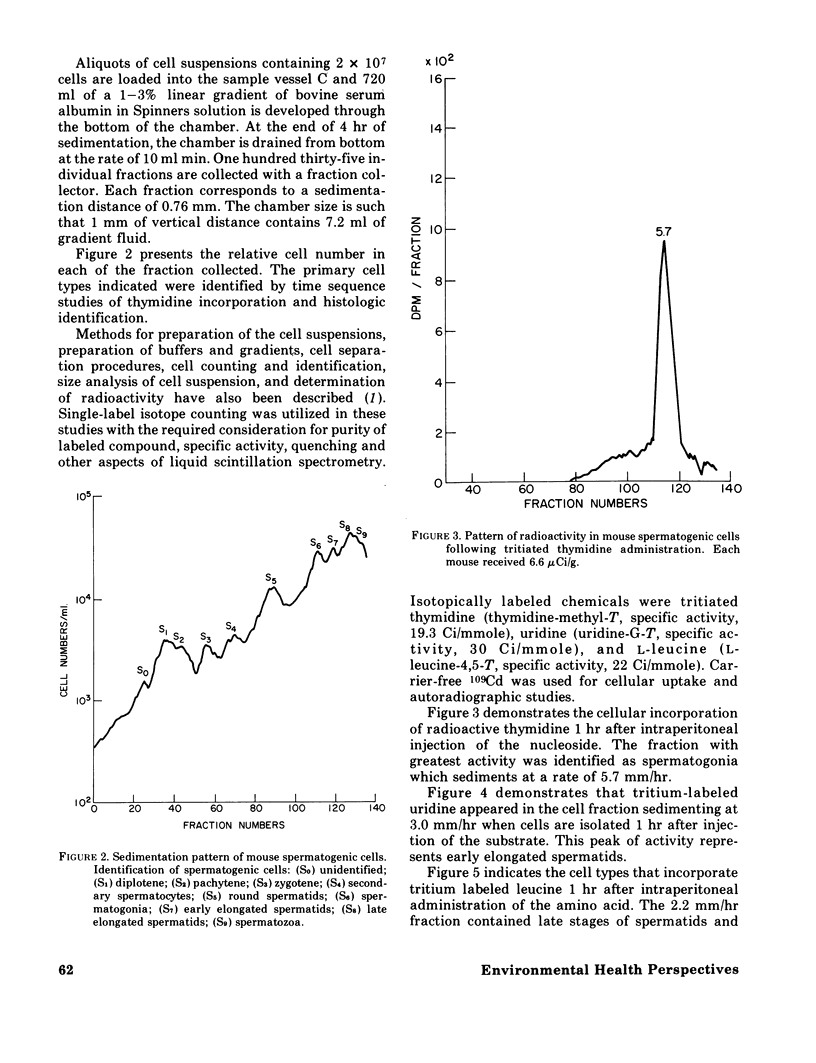
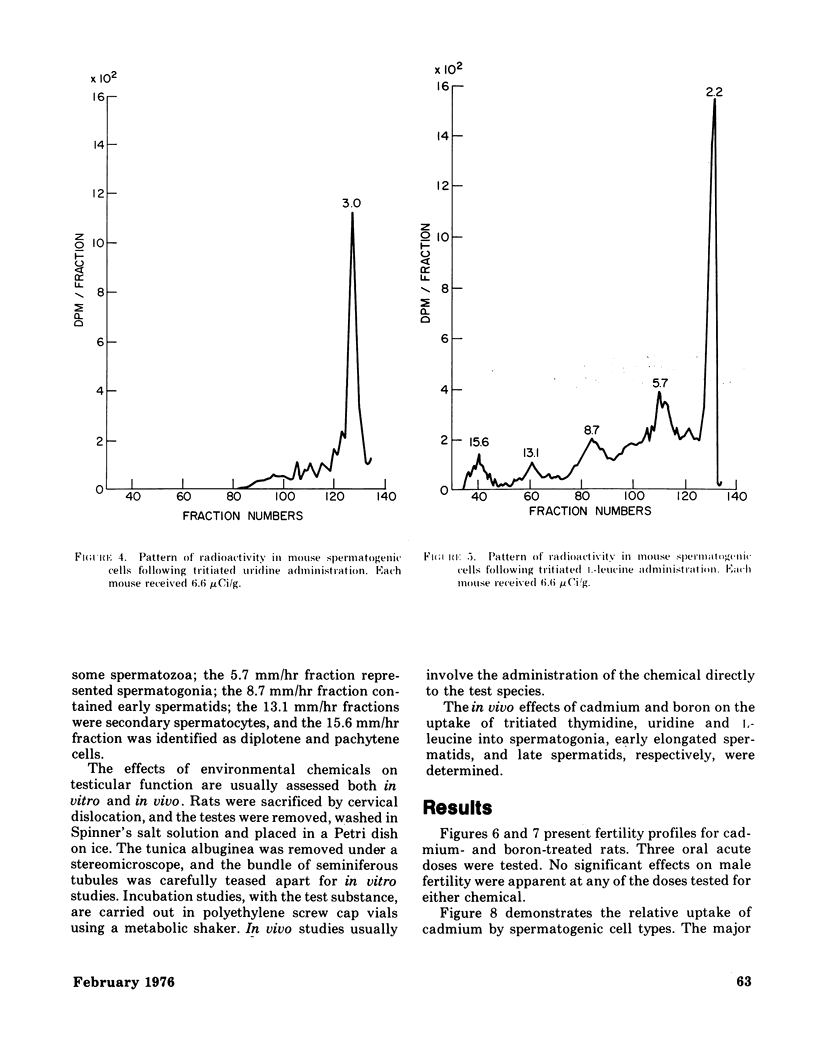
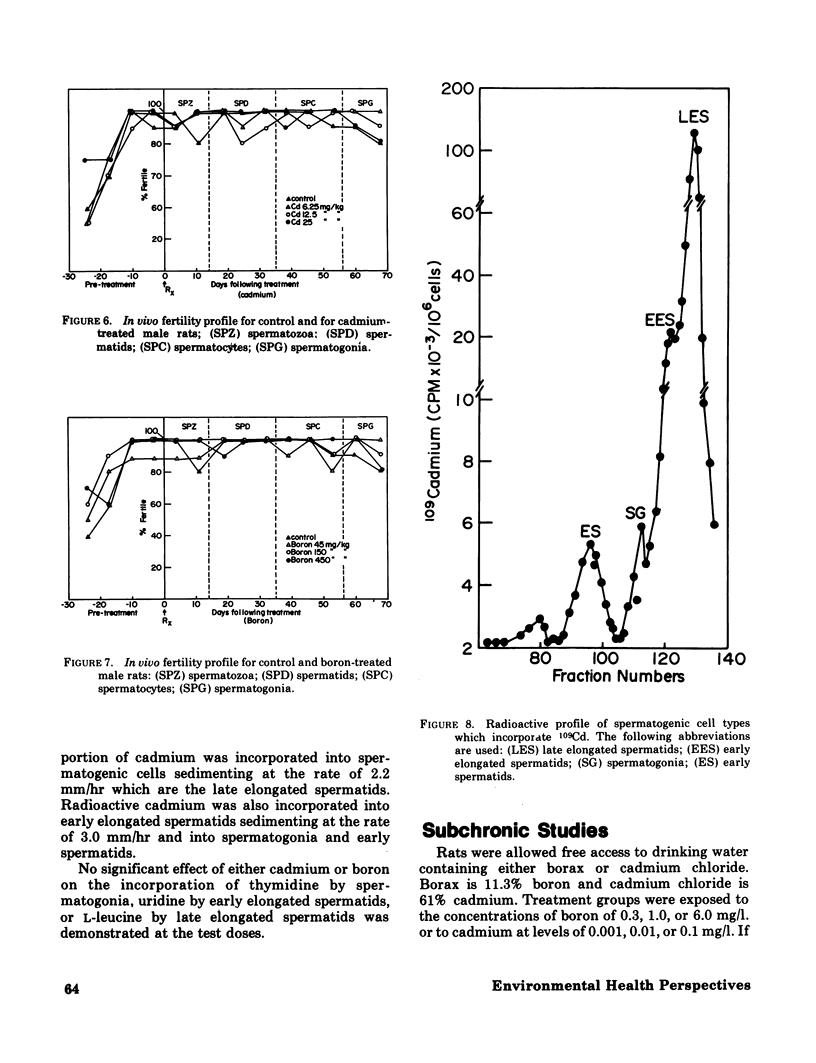
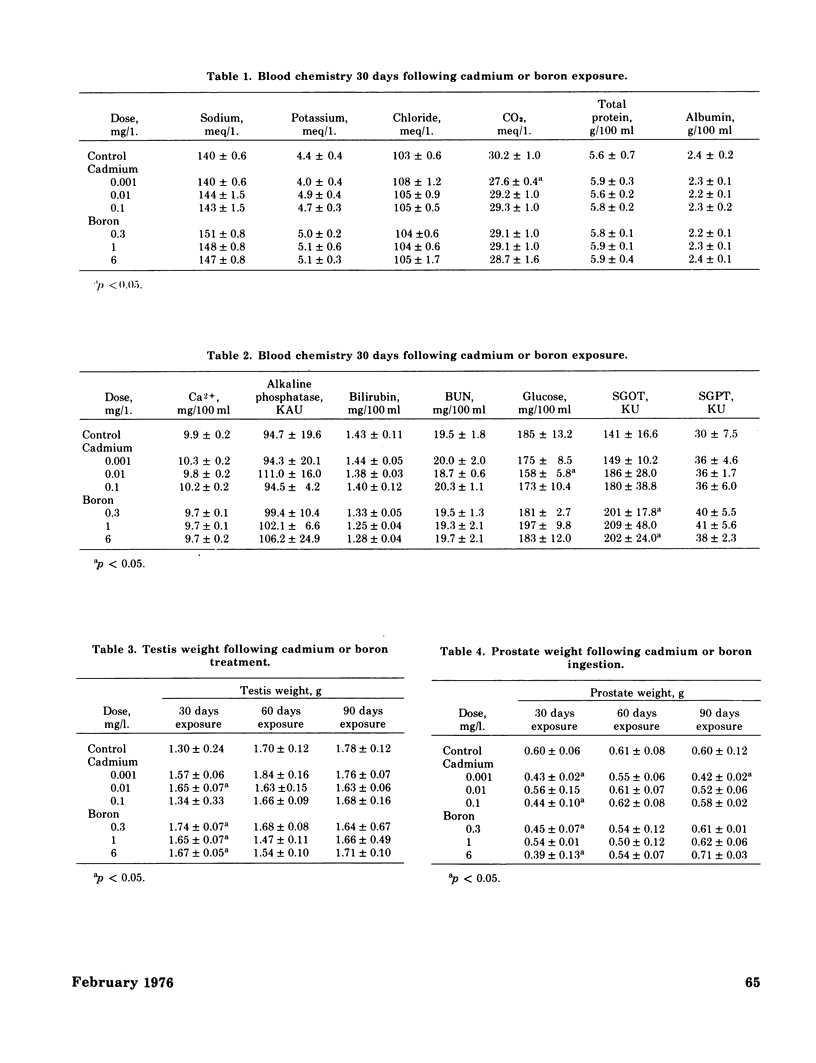
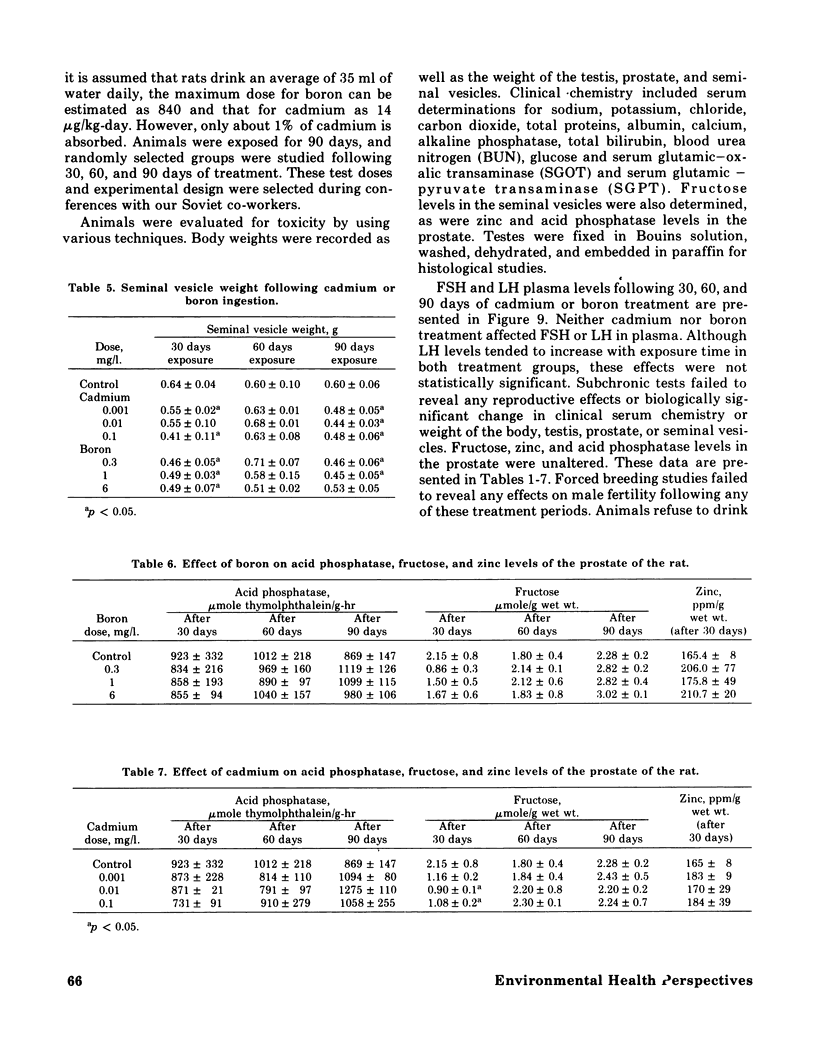
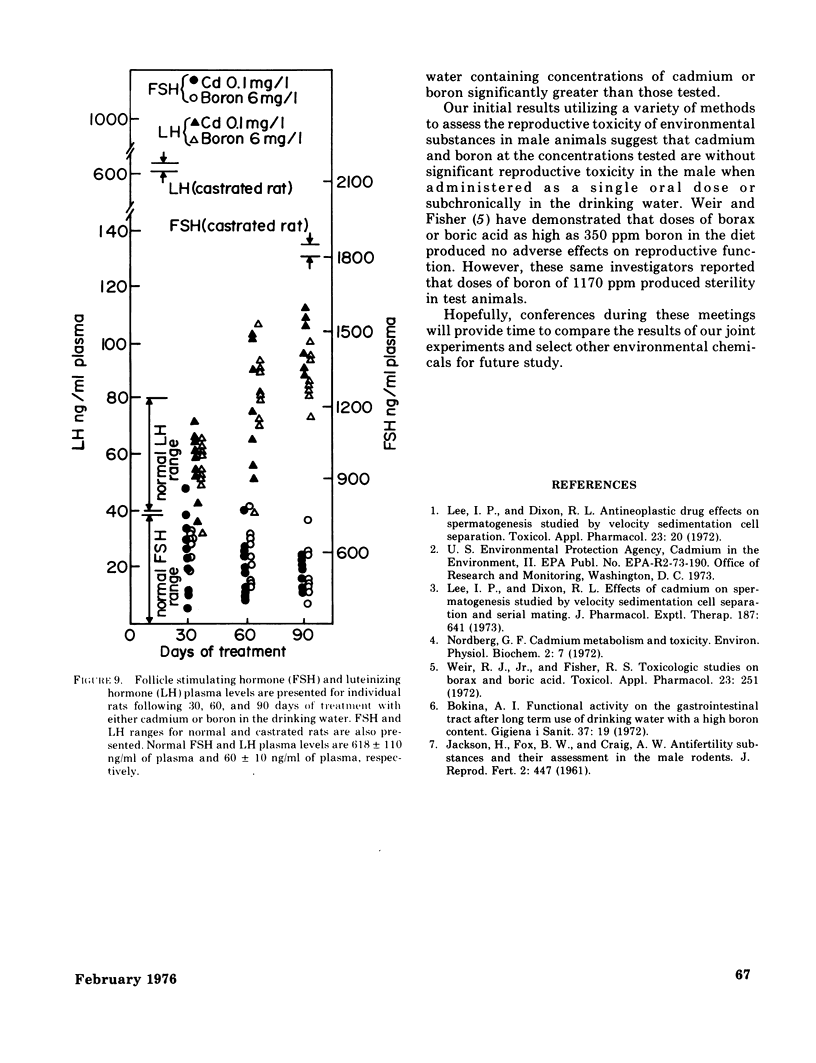
Selected References
These references are in PubMed. This may not be the complete list of references from this article.
- Brenner G. M., Wenzel D. G. Carbon monoxide and cultured rat heart cells. I. Inhibition of cell growth and maintenance of beating rate. Toxicol Appl Pharmacol. 1972 Oct;23(2):251–262. doi: 10.1016/0041-008x(72)90188-3. [DOI] [PubMed] [Google Scholar]
- JACKSON H., FOX B. W., CRAIG A. W. Antifertility substances and their assessment in the male rodent. J Reprod Fertil. 1961 Nov;2:447–465. doi: 10.1530/jrf.0.0020447. [DOI] [PubMed] [Google Scholar]
- Lee I. P., Dixon R. L. Antineoplastic drug effects on spermatogenesis studied by velocity sedimentation cell separation. Toxicol Appl Pharmacol. 1972 Sep;23(1):20–41. doi: 10.1016/0041-008x(72)90201-3. [DOI] [PubMed] [Google Scholar]
- Lee I. P., Dixon R. L. Effects of cadmium on spermatogenesis studied by velocity sedimentation cell separation and serial mating. J Pharmacol Exp Ther. 1973 Dec;187(3):641–652. [PubMed] [Google Scholar]


